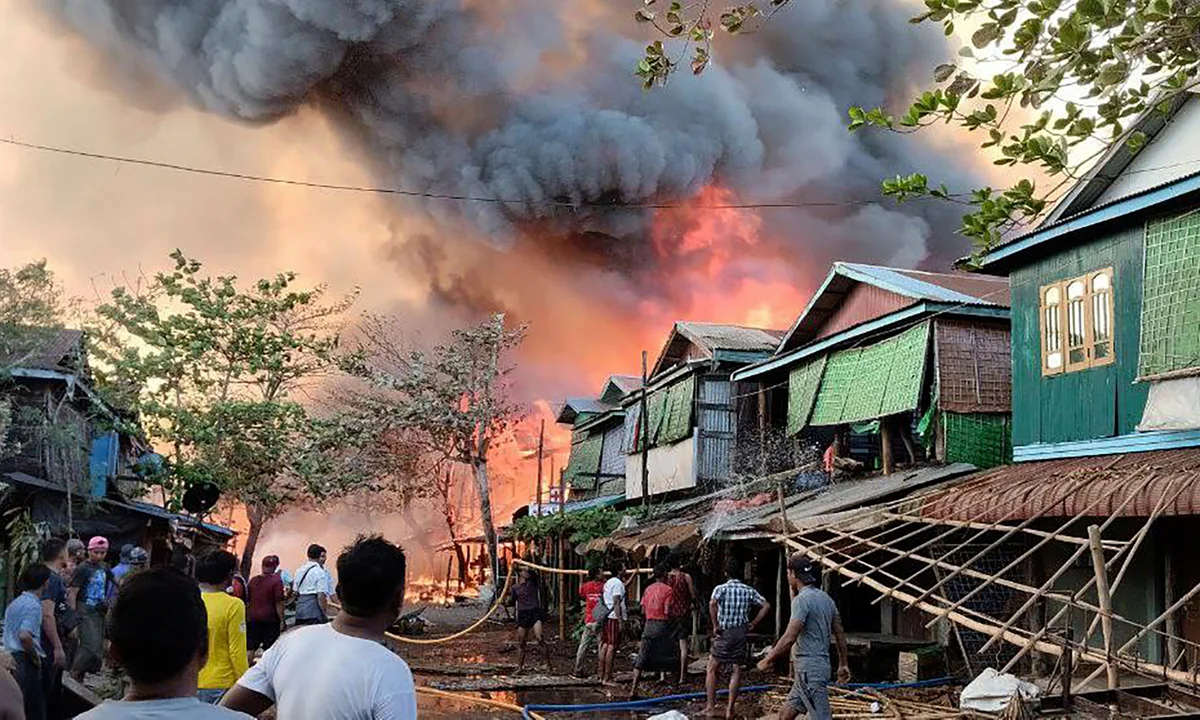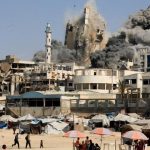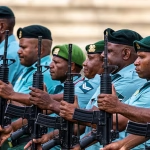The ongoing civil conflict in Myanmar has once again taken a devastating toll on civilians, with reports of an airstrike hitting schools in Rakhine State and leaving 18 people dead, including young students. According to the Arakan Army, a powerful ethnic Rakhine rebel group, the military carried out a series of strikes on school buildings being used by the local population.
- The Airstrike and Immediate Aftermath
- Background: Myanmar’s Conflict in Rakhine
- Impact on Education and Children
- International Reaction
- Voices from the Ground
- The Broader Humanitarian Crisis
- Myanmar Military Strategy and Civilian Casualties
- Calls for Accountability
- Prospects for Peace
- Conclusion
- FAQs
- What happened during the Myanmar airstrike in Rakhine State?
- Why did the military target schools in Rakhine?
- How has the international community responded?
- What is the humanitarian situation in Myanmar right now?
- Can the International Criminal Court prosecute Myanmar’s military leaders?
- What does this mean for the future of peace in Myanmar?
- Conclusion
The event has drawn international condemnation, ignited renewed debates about Myanmar’s military strategy, and highlighted the escalating humanitarian crisis facing the region. This tragedy underscores how education, a cornerstone of peace and development, is increasingly caught in the crossfire of Myanmar’s long and bloody conflict.
The Airstrike and Immediate Aftermath
Witnesses and local rebel sources report that the airstrike struck two schools in a small township in Rakhine State, where dozens of children and villagers had taken refuge. While precise details remain difficult to verify due to limited media access, the Arakan Army claimed that at least 18 people were killed, including students and teachers, and more than a dozen others injured. Survivors described a scene of chaos, with buildings collapsing and families desperately searching for loved ones amid debris and smoke.
The military junta has not issued a clear response, though in past instances, it has defended its use of airpower by alleging that rebel groups use civilian infrastructure as cover for their operations. Human rights organizations, however, argue that attacks on schools violate international humanitarian law, particularly the principles of distinction and proportionality.
Background: Myanmar’s Conflict in Rakhine
Rakhine State, situated in western Myanmar, has long been a hotspot of ethnic and political tensions. The region is home to the Rakhine Buddhist population, the Rohingya Muslim minority, and several insurgent groups, the most prominent being the Arakan Army. Since the military coup in February 2021, which ousted Aung San Suu Kyi’s elected government, conflict has intensified across the country, with Rakhine becoming a renewed battleground.
The Arakan Army has sought greater autonomy for Rakhine State and has steadily increased its influence in the region. Clashes between the Myanmar military, also known as the Tatmadaw, and the Arakan Army have displaced tens of thousands of civilians in recent years. This latest airstrike adds to a grim pattern of civilians being caught between two warring sides, with schools, monasteries, and even hospitals no longer spared from the violence.
Impact on Education and Children
The deliberate or indiscriminate targeting of schools has far-reaching consequences that extend beyond immediate casualties. UNICEF and other child protection agencies have repeatedly emphasized that attacks on schools not only claim young lives but also deprive entire communities of their future. Children in Rakhine already face limited access to education due to displacement, poverty, and restrictions on movement.
A UNICEF spokesperson recently noted that schools must remain safe havens for children, not battlefields. When education systems collapse, children lose opportunities to build better lives, communities are destabilized, and cycles of poverty and violence continue unchecked. The destruction of schools in Rakhine State is a direct attack on hope itself, leaving parents fearful and children traumatized.
International Reaction
The international community has been quick to condemn the incident, with human rights organizations calling for an independent investigation. Amnesty International described the airstrike as a potential war crime, pointing to the global ban on targeting schools during armed conflicts. The United Nations Special Rapporteur on human rights in Myanmar urged immediate accountability, warning that Myanmar’s military appears to be operating with impunity.
Western governments, including the United States and members of the European Union, have reiterated their calls for sanctions against Myanmar’s junta and for stronger measures to pressure the regime into halting attacks on civilians. Meanwhile, ASEAN, the regional bloc that includes Myanmar, has faced criticism for its limited ability to curb the violence despite repeated diplomatic initiatives.
Voices from the Ground
Survivors and local aid workers provide some of the most haunting accounts of the airstrike’s aftermath. One teacher, speaking anonymously due to safety concerns, said she was conducting a lesson when the sound of jets roared overhead, followed by explosions that tore through the school compound. She described scenes of children screaming, bleeding, and calling for their parents.
Parents who lost children in the attack expressed both grief and anger, blaming the military for targeting civilian areas. A father whose 12-year-old daughter was killed told local reporters that the military’s actions “show no respect for life or humanity.” These stories underline the unbearable human cost of a war where civilians are paying the heaviest price.
The Broader Humanitarian Crisis
The tragedy in Rakhine is part of a much larger humanitarian disaster unfolding across Myanmar. According to the United Nations, more than two million people have been displaced since the coup, with hundreds of thousands forced into makeshift camps lacking basic necessities. Airstrikes have been reported in Kachin, Karen, and Chin states, suggesting a nationwide strategy of using airpower to suppress resistance.
The crisis has also disrupted healthcare, with hospitals bombed or occupied by military forces. Humanitarian aid is often blocked or restricted by the junta, leaving vulnerable populations without food, medicine, or shelter. For children, the loss of safe learning environments compounds existing trauma and increases the risk of exploitation and abuse.
Myanmar Military Strategy and Civilian Casualties
The military junta has increasingly relied on airpower as its ground forces struggle to maintain control in various regions. Analysts argue that the airstrikes are designed to weaken insurgent groups while spreading fear among civilians who might provide them support. However, this approach often backfires by fueling resentment and strengthening local resistance movements.
International law prohibits deliberate attacks on civilians, yet Myanmar’s armed forces have been repeatedly accused of disregarding these principles. Reports of indiscriminate shelling, extrajudicial killings, and widespread human rights abuses are well-documented. The attack on Rakhine schools fits into this larger pattern of military tactics that disregard civilian safety.
Calls for Accountability
Human rights advocates stress that accountability is essential if Myanmar is to break free from cycles of violence. Groups such as Human Rights Watch and the Myanmar Accountability Project are urging the International Criminal Court (ICC) to open investigations into crimes committed by the junta. While Myanmar is not a party to the Rome Statute, legal experts argue that cross-border crimes affecting refugees in neighboring Bangladesh could provide jurisdiction.
Justice, however, remains elusive. The military has historically resisted international pressure and continues to wield control through fear and suppression. For the victims’ families, accountability is not just a matter of law but of dignity and recognition of their suffering.
Prospects for Peace
The latest airstrike raises urgent questions about the prospects for peace in Myanmar. The junta shows little willingness to negotiate with rebel groups or political opponents, while resistance movements are emboldened by public anger at military atrocities. Analysts fear that Myanmar is entering a prolonged state of civil war, with no clear path to reconciliation.
Efforts by ASEAN and international mediators have produced limited results, largely due to the junta’s refusal to implement ceasefires or allow humanitarian access. Without stronger global pressure and meaningful dialogue between all stakeholders, the conflict is likely to intensify, placing more civilians at risk.
Conclusion
The airstrike on schools in Rakhine State is not just another tragic incident in Myanmar’s conflict; it is a profound reminder of the human cost of unchecked violence. By targeting places of learning, the military has struck at the heart of a community’s future. Children who should be preparing for brighter lives now lie among the dead, while survivors carry wounds that will last a lifetime.
The international community must not allow this tragedy to fade into the background of global crises. Stronger accountability measures, increased humanitarian aid, and renewed diplomatic pressure are urgently needed to protect Myanmar’s civilians. Until then, parents in Rakhine and across Myanmar will continue to wonder whether sending their children to school is a risk too great to take.
FAQs
What happened during the Myanmar airstrike in Rakhine State?
According to the Arakan Army, Myanmar’s military carried out an airstrike on schools in Rakhine State, killing at least 18 people, including students and teachers. The attack destroyed school buildings and left many injured, highlighting the dangers civilians face in conflict zones.
Why did the military target schools in Rakhine?
The military often claims that rebel groups, such as the Arakan Army, use civilian infrastructure as cover for their operations. However, human rights groups argue that targeting schools is a violation of international law and cannot be justified under the rules of armed conflict.
How has the international community responded?
Human rights organizations and governments worldwide have condemned the attack. Amnesty International labeled it a possible war crime, while the United Nations called for accountability. Western governments are pushing for stronger sanctions, though regional bodies like ASEAN have struggled to influence the junta’s actions.
What is the humanitarian situation in Myanmar right now?
Myanmar is facing a severe humanitarian crisis, with more than two million people displaced since the 2021 coup. Civilians face shortages of food, medicine, and education. Airstrikes and military operations continue to endanger lives, while access to aid is heavily restricted by the junta.
Can the International Criminal Court prosecute Myanmar’s military leaders?
Myanmar is not a party to the Rome Statute, which established the ICC. However, legal experts argue that crimes affecting refugees in neighboring countries, such as Bangladesh, could provide a pathway for the court to open investigations. So far, accountability has been limited, but calls for justice are growing louder.
What does this mean for the future of peace in Myanmar?
The attack signals a worsening conflict, with little chance of peace in the short term. Rebel groups continue to resist the junta, and civilians are increasingly caught in the middle. Without meaningful dialogue and stronger international intervention, Myanmar risks sinking deeper into protracted civil war.
Conclusion
The Myanmar airstrike on schools in Rakhine State is a tragedy that demands global attention. Beyond the headlines, it represents shattered lives, grieving families, and a community robbed of its future. Until decisive steps are taken to hold perpetrators accountable and protect civilians, the cycle of violence in Myanmar will continue, leaving generations of children paying the price for a war they did not choose.







